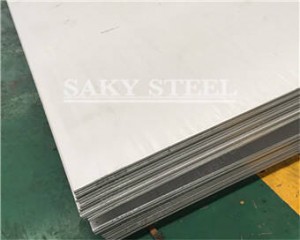17-4PH alloy is a precipitation-hardening, martensitic stainless steel composed of copper, niobium, and tantalum. Characteristics: After heat treatment, the product exhibits improved mechanical properties, achieving compressive strength of up to 1100-1300 MPa (160-190 ksi). This grade is not suitable for use at temperatures exceeding 300º C (572º F) or very low temperatures. It demonstrates good corrosion resistance in atmospheric and dilute acid or salt environments, comparable to 304, and superior to ferritic steel 430.
17-4PH alloy is a precipitation-hardening, martensitic stainless steel composed of copper, niobium, and tantalum. Characteristics: After heat treatment, the product exhibits improved mechanical properties, achieving compressive strength of up to 1100-1300 MPa (160-190 ksi). This grade is not suitable for use at temperatures exceeding 300º C (572º F) or very low temperatures. It demonstrates good corrosion resistance in atmospheric and dilute acid or salt environments, comparable to 304, and superior to ferritic steel 430.
Heat Treatment Grades and Performance Distinctions: The distinguishing feature of 17-4PH is its ease of adjusting strength levels through variations in heat treatment processes. Transformation to martensite and aging precipitation hardening are the primary means of strengthening. Common heat treatment grades in the market include H1150D, H1150, H1025, and H900.Some customers specify the need for 17-4PH material during procurement, requiring heat treatment. As the heat treatment grades are varied, different usage conditions and impact requirements must be carefully distinguished.The heat treatment of 17-4PH involves two steps: solution treatment and aging. The solution treatment temperature is the same for rapid cooling, and aging adjusts temperature and the number of aging cycles based on the required strength.
Applications:
Due to its excellent mechanical and corrosion-resistant properties, 17-4PH is widely used in industries such as petrochemicals, nuclear power, aerospace, military, marine, automotive, and medical fields. In the future, it is expected to have a promising market outlook similar to duplex steel.
Post time: Oct-16-2023
